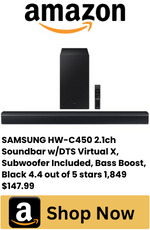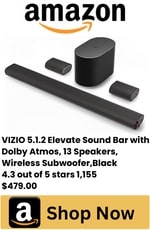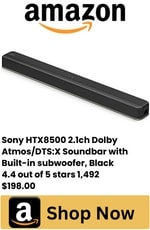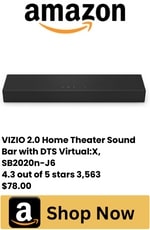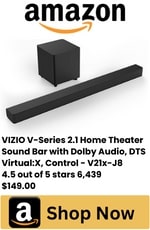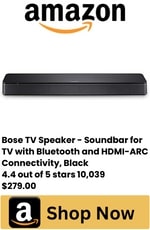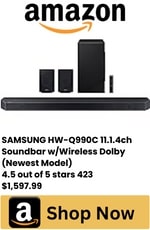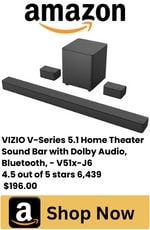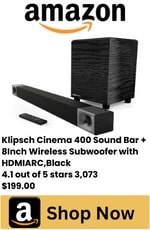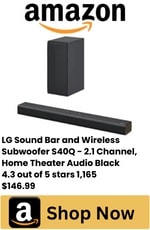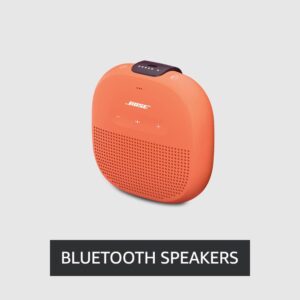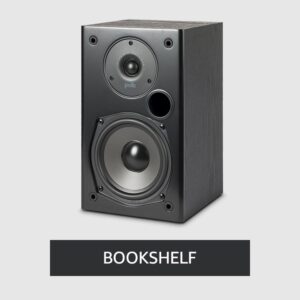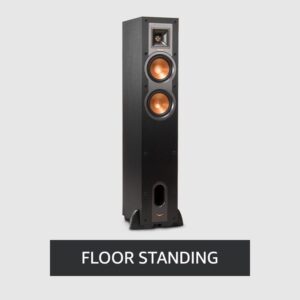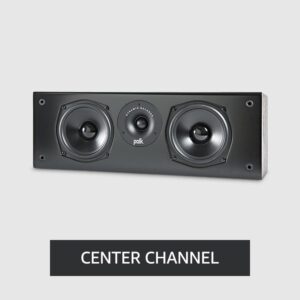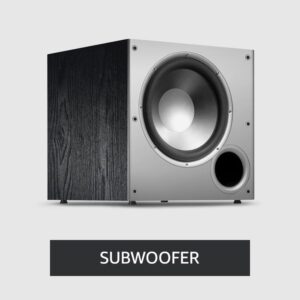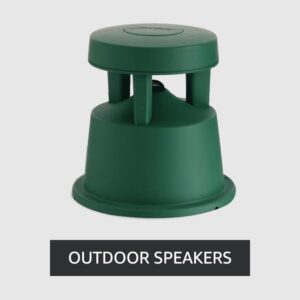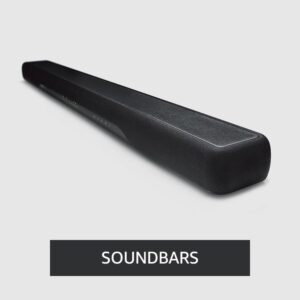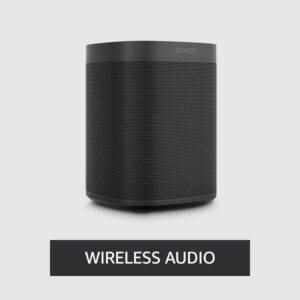What Wattage Soundbar Do I Need
A soundbar or speaker’s Wattage or Watts is yet another marketing method used to sell their product as being louder and better than other products available on the market. In most cases, the wattage of a speaker is not important. What matters is how sensitive they are and how loud they can go. Most of the time, the many “sound bar specs” included on soundbars are unclear and accurate and can often confuse consumers. What Wattage Soundbar Do I Need?
Would all manufacturers use the same format and method for providing the correct soundbar specifications? Of course not; of course, they wouldn’t. It’s the highest Specification the manufacturer deems reasonable and believable. Many sound bars products are being rated this way, for example, soundbar wattage, speaker wattage, amplifier wattage, projector lumens, projection throw ratio, etc. And the list keeps going and going.
Do not solely rely on specs before making a purchase! We have recommended soundbars for every budget, so you won’t have to worry about buying the wrong one. Let’s get to the point.
How Do Soundbar Specifications Work?
The sound bars work of wattage does not matter for how it sounds (in our guide, you can learn more about other uncommon terms used with soundbars). A speaker’s quality doesn’t depend on the total watts.
You should probably understand what the different soundbar specs mean before searching through them. Both soundbars and regular speakers have a variety of specifications, so I will explain each in straightforward terms.
Explanation of Soundbar Watts
The power of an amplifier can be measured in Watts. The wattage of amplifiers is specified as the output power. Watts are used to indicate the amount of power input for normal speakers. Each speaker has a limit on how many output watts it can take without damage. The manufacturer usually gives this figure out regarding normal speakers.
In the case of soundbars, the configuration is different since most sound bars have integrated amplifiers. Soundbars are driven by their dedicated amplifiers once you connect power to them. The built-in amplifier wattage will vary depending on the manufacturer.
A passive soundbar does not contain a built-in amplifier, so it can be viewed as a model that does not have an amplifier. An external amplifier or a standard receiver powers this type of soundbar. Generally speaking, passive soundbars use high-quality speakers and cost much more than active soundbars. Despite this, passive soundbars are not common.
Sensitivity of the speaker (dB or decibels)
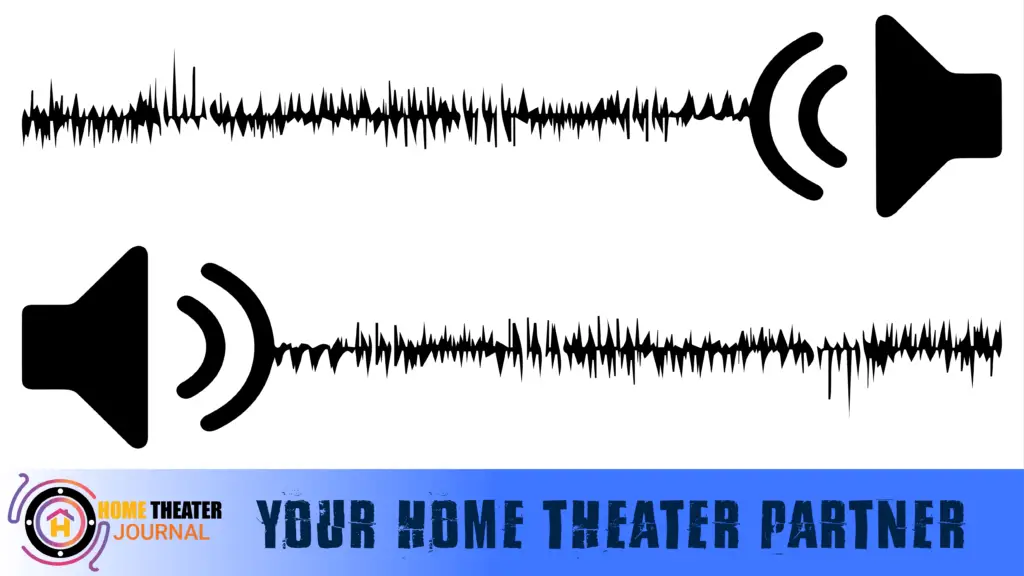
A speaker sensitivity converts power and Watts to volume or decibels (decibels). dB is the sensitivity specification. SPL is sound pressure level. An audio system’s dB specification is found by supplying the speaker with 1 watt of power, then measuring the decibels it produces from one meter away.
We will say, for example, that a speaker has a sensitivity of 85dB, which means it can produce a louder sound of 85 decibels. A person one meter from the speaker, using one watt of power, should be able to hear sounds of 85dB at an equal distance from the speaker. Wattage doesn’t always equal dB, so you should be aware that wattage increases won’t necessarily increase the output. You’ll only get a 3dB volume boost every time the watts double.
A dB sensitivity rating chart can be found below to better display the conversion from watts to DBS according to the sensitivity rating. There aren’t any specific soundbars requirements because the specs are usually very general. However, it is still imperative for you to know the measurements used for some specifications.
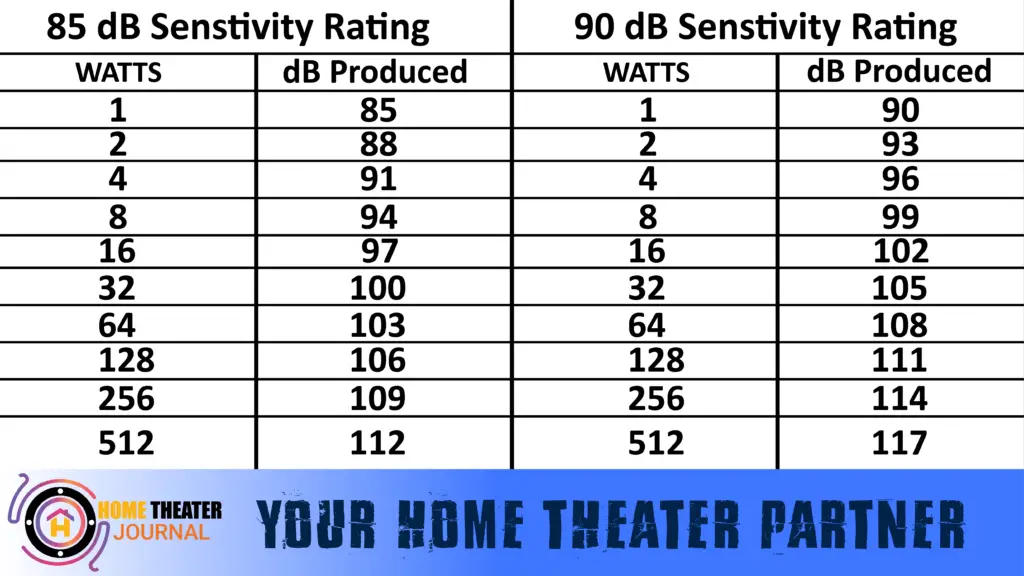
Understanding what a dB spec means can be hard, but soundbar manufacturers often provide it. It is unclear whether they are speaking of the actual sensitivity rating or talking about how loud the soundbar can play using the built-in amplifier.
How to Understand dB Levels
Most people do not understand when a soundbar states it has “up to 90 dB of audio quality”. Below, a handy chart connects dB levels to some of the most recognized and commonly heard sounds.
| dB Level | Description |
|---|---|
| 0 dB | The threshold of hearing for the average human ear. |
| 10 dB | The sound of breathing or rustling leaves. |
| 20 dB | The sound of a whisper or a quiet library. |
| 40 dB | The sound of a refrigerator or background noise in an office. |
| 60 dB | The sound of normal conversation or a busy street. |
| 80 dB | The sound of heavy traffic, a vacuum cleaner, or a garbage disposal. |
| 100 dB | The sound of a motorcycle, a rock concert, or a jackhammer. |
| 120 dB | The threshold of pain for the average human ear. |
| 140 dB | The sound of a gunshot or a jet engine at takeoff. |
| 194 dB | The theoretical maximum sound level in air. |
Frequency Range
In a speaker, the frequency range is the difference between the lowest and highest frequencies it can reproduce. Hertz (Hz) is the unit of measurement for frequency. The low-pitched sound of the bass is around 20Hz – 200Hz. The subwoofer is principally responsible for producing the very low end.
Between 200Hz and 2000Hz, the midrange frequencies can be found. Midbass speakers and woofers are primarily responsible for producing these ranges. From 2000Hz to 20000Hz (2kHz to 20kHz) is the range in which higher frequency or higher pitch sounds are recorded. Tweeters can also be used to produce these higher frequency ranges.
Remember that most speakers have difficulty reproducing at the absolute lowest and highest ranges of their frequencies. As with your voice, making a super deep or high-pitched sound is difficult. This is also the case with speakers. Generally, they are most likely to attract and delight their fans through the middle of their ranges!
It’s important to know that soundbars have less low-frequency ability than other audio components. The majority of soundbars contain little depth. As a result, they cannot provide enough room for a standard-sized wireless subwoofer to be accommodated in the cabinet (usually 8″) due to the small size of the enclosure.
This is because most soundbars can connect a separately mounted wireless subwoofer to them. You must use your system to have that deep bass boom while listening to music.
Soundbar Channels
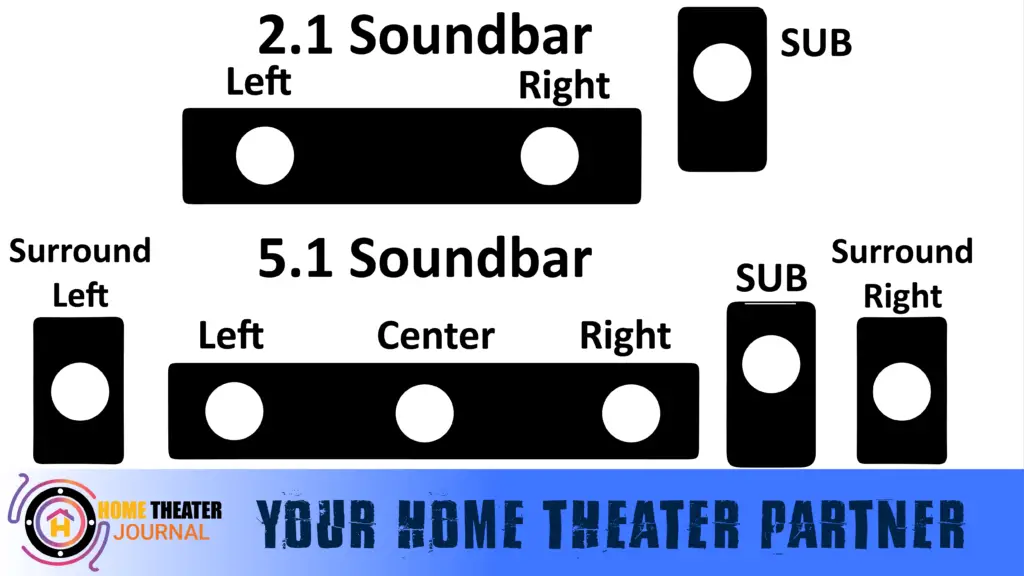
There are usually 2 or 3 channels on standalone soundbars. In two-channel soundbars, left and right speakers make up the audio output. There are three-channel soundbar speakers on the left, middle, and right sides.
Modern soundbars also come with wireless subwoofers and rear speakers that are becoming increasingly popular. Adding a subwoofer would increase the number of channels to either 2.1 or 3.1, drastically increasing the system’s ability to handle low frequencies.
Wireless speakers and wireless external subwoofer are some of the components of some systems. For instance, you may have a 5.1 surround sound system installed in your home. You should definitely read about the differences between 2.1 and 5.1 soundbars if you want to learn more about some of the best soundbars for Hisense TVs available.
Our article explaining everything you need to know about virtual surround sound channels can be found here if you want more information.
Choose the Right Wattage Soundbar for Your room Size
Here is a comparison table outlining the wattage ranges you might want to consider when choosing a soundbar based on the size of your room:
| Room Size | Soundbar Wattage |
| Small (up to 150 sq. ft.) | 50-100 watts |
| Medium (150-300 sq. ft.) | 100-300 watts |
| Large (300-500 sq. ft.) | 300-500 watts |
| Extra Large (500+ sq. ft.) | 500+ watts |
It’s important to note that wattage isn’t the only factor to consider when choosing a soundbar. Other factors like soundbar’s sound quality, brand reputation, and connectivity options should also be considered. Additionally, the size and layout of your room can also affect the sound quality and performance of your soundbar. It’s always a good idea to read reviews and do research before purchasing to ensure that you’re getting the best soundbar for your needs.
What You Need to Know About Soundbar Specification
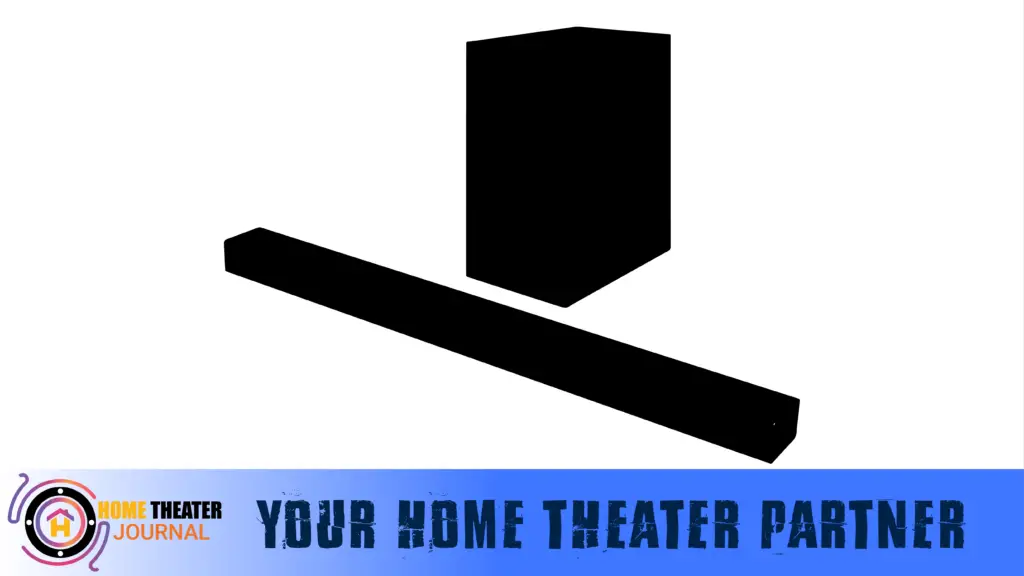
There are a lot of soundbar specs out there. Everywhere I look, and I mean everywhere. The manufacturer will usually specify the wattage (power output), the decibels (decibels), or the frequency ranges within which the multiple speakers operate.
Manufacturers differ in their specifications, though. Depending on the supplier, some may provide a clear specification, and some may not! Finding a soundbar that meets your needs can be challenging if you have particular specifications in mind.
To give you an idea of the specifications for different soundbars, here are a few examples:
- A Polk MagniFi MAX soundbar has a system power of 180W.
- Sound Bar VIZIO SB2920-C6 – This Sound Bar has been mentioned in previous reviews as producing 95 decibels and less than 1% of total harmonic distortion while stating the sound bar’s frequency range is between 70Hz – 19KHz.
- PLAYBAR by Sonos – Now, this is crazy. A specification for power output, dB levels, or frequency range is not provided. Null! I have seen a spec sheet containing “nine Class-D digital amplifiers.” Class-D digital amplifiers may be highly effective in power distribution and utilization, but apart from that, there is no data to back that up.
- Samsung Sound+ Premium Soundbar – The manufacturer does not specify the soundbar’s output power or decibel level. However, it does mention that it has a frequency response of 40Hz – 20KHz.
Four different manufacturers offer different soundbar specifications, and comparing them is a bit confusing. It makes sense that everyone would use the same method to define a product’s capabilities so that consumers could make accurate comparisons between their products. Unfortunately, this does not happen.
The Sonos Playbar (on Amazon) wins the four examples. Having installed a few myself, I know they have incredibly good sound quality with immersive surround sound. Nevertheless, the question remains as to how the average consumer will be able to tell that the Sonos Playbar is better. It is an immersive sound bar that is much more expensive than the others, and I am unsure if the individual realizes it is of higher quality.
Sonos specifically asked me why audio specs were not published for their Playbar. They replied, “Sonos does not provide audio specifications because the figures do not represent the speakers’ capabilities. The best way to get a good feel for the speakers is to try them out yourself.
| Soundbar Model | Number of Channels | Total Power Output | Recommended Room Size | Recommended TV Size |
|---|---|---|---|---|
| Samsung HW-T450 | 2.1 | 200 watts | Small to medium | Up to 55 inches |
| Vizio SB36512-F6 | 5.1.2 | 360 watts | Medium to large | 55 inches or larger |
| Yamaha YAS-209 | 2.1 | 200 watts | Small to medium | Up to 55 inches |
| Sonos Arc | 5.0.2 | 450 watts | Medium to large | 55 inches or larger |
| Sony HT-G700 | 3.1 | 400 watts | Medium to large | 55 inches or larger |
It’s important to note that the recommended wattage and room/TV size may vary based on your personal preferences and the layout of your home theater setup. The soundbar’s other features, such as connectivity options and audio formats supported when purchasing, are also worth considering.
FAQ’s
Q: Do I need to match the wattage of my soundbar to my TV?
A: No, you don’t need to match the wattage of your soundbar to your TV. However, ensuring your soundbar is compatible with your TV’s audio output is important.
Q: How do I know if a soundbar is compatible with my TV?
A: You can check the specifications of your soundbar and TV to ensure they are compatible. Look for input/output options like HDMI, optical, or Bluetooth.
Q: Can a soundbar with high wattage consume more power?
A: A high-wattage soundbar can consume more power than a lower-wattage soundbar. However, modern soundbars are designed to be energy-efficient.
Q: What is the difference between RMS and peak power output?
A: RMS (Root Mean Square) measures average power output, while peak power output measures the maximum power output a device can produce. When choosing a soundbar, look for the RMS power output.
Q: Is it better to use a higher-wattage soundbar if I have a small room?
A: Not necessarily. A higher-wattage soundbar may produce more volume, but it’s unnecessary if you have a small room. A 50-100 watt soundbar should be sufficient for small rooms.

Author: Baqarrasheed
I know all about home theater items! I have been doing this for more than three years now. I am good with things like sound systems, TVs, projectors, and all that cool entertainment gear. I like to help folks by testing and talking about these gadgets on Hometheaterjournal. I want to make sure everyone can create an awesome entertainment setup at home without any confusion.
I write the creative content for HometheaterJournal.



